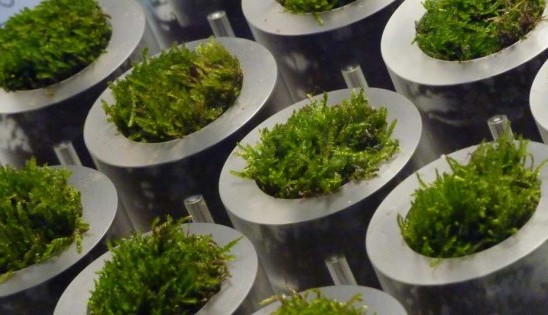The hidden (electrical) power of moss
on

Scientists at
Moss is regarded as a menace by gardeners who seek to eradicate it from their lawns. Now researchers all over the world are exploring how moss, algae and plants could be used as a source of renewable energy in the future.
A team of designers and scientists at
Still at early stages, BPV has the potential to power small devices such as digital clocks. Low cost BPV devices may become competitive alternatives to conventional renewable technologies such as bio-fuels in the next ten years.
The appeal of BPV lies in its ability to harness a natural process that takes place all around us. Photosynthesis occurs when plants convert carbon dioxide from the atmosphere into organic compounds using energy from sunlight. Plants use these organic compounds – carbohydrates, proteins and lipids – to grow.
When the moss photosynthesises it releases some of these organic compounds into the soil which contains symbiotic bacteria. The bacteria break down the compounds, which they need to survive, liberating by-products that include electrons. The table designed by the
The table is based on research into biophotovoltaics funded by the Engineering and Physical Sciences Research Council (EPSRC). This pioneering work involves collaboration between the Departments of Chemical Engineering and Biotechnology, Biochemistry and Plant Sciences at
Looking into the future, possible applications for BPV include solar panels, power stations and generators. Currently at concept stage, these are envisaged as sustainable solutions to pressing problems across the world – including the growing need for energy and fresh water from vulnerable communities.
The


Discussion (0 comments)